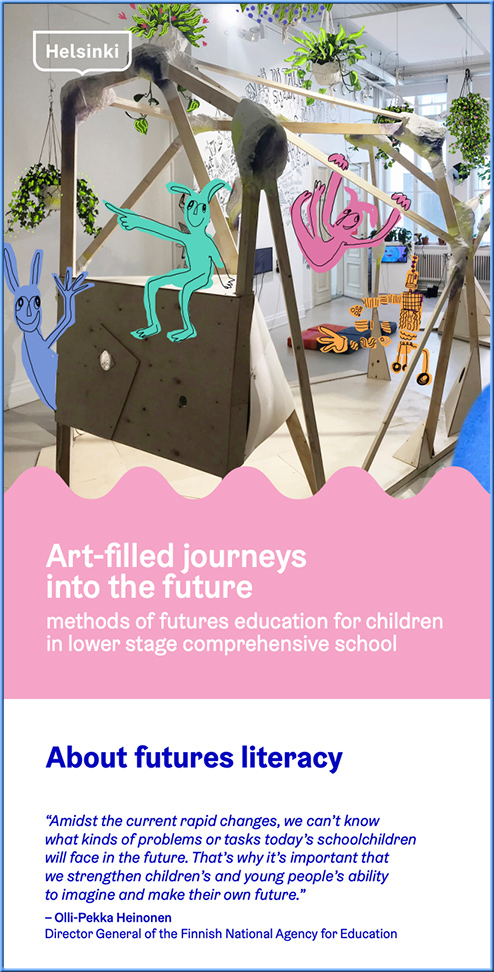Art-filled journeys into the future — methods of futures education for children in lower stage comprehensive school — from kultus.fi by Ilpo Rybatzki and Otto Tähkäpää
See this PDF file which contains the following excerpt:
In art, futures literacy plays a significant role. Art has the ability to point elsewhere; to fool and mess around with things and shake up conventions without needing to achieve measurable benefits (Varto, 2008). Art ensures a solid background for imagining alternative worlds. It is important to support a permissive atmosphere that supports experimentation! From the perspective of art pedagogy, activities focus on the idea of art experience as meeting place (Pääjoki, 2004) where people can see themselves in a new light beside another person’s thoughts and imagination. Strengthening futures literacy means supporting transformative learning that aims for change. Through this type of learning, we can question norms, roles, identities and the concept of what is ‘normal’ (Lehtonen et al., 2018).
When discussing the future, we are always discussing values: what kind of future is desirable for any one person? Artistic activity can produce materials through which human meanings can be communicated from one person to another and questions about values in life can be discussed (Varto, 2008; Valkeapää, 2012). Encounters create opportunities for dialogue and enriching one’s perspectives. Important aspects include creating safe settings, the individual expression of the participants, the courage to open up and thrown oneself into the centre of an experience, as well as the courage to question or even completely let go of presumptions. In the age of the environmental crisis, art has a critical role in all of society. We cannot solve difficult problems using the same kind of thinking that created the problems in the first place.









